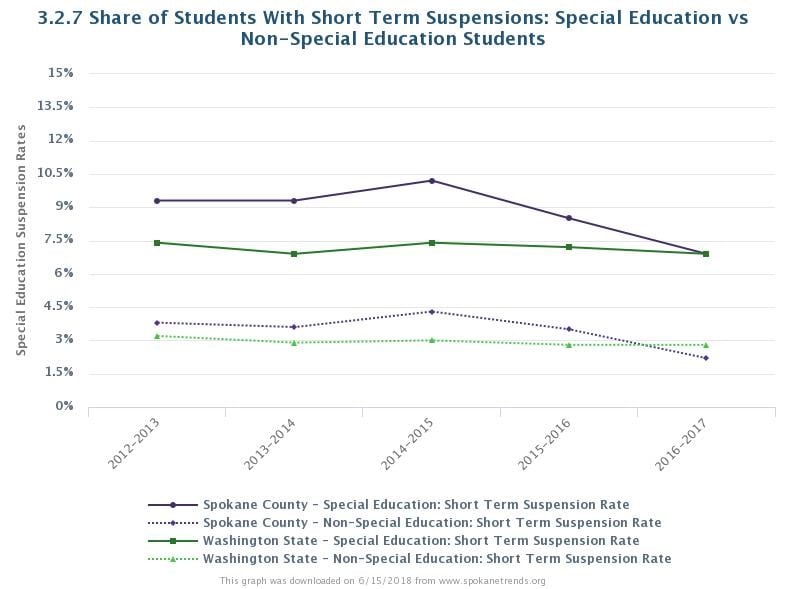Suspensions of special education students decreasing
by Scott Richter and Dr. Patrick Jones
Over the last decade or more, the efficacy of zero-tolerance policies have come under fire. According to the American Psychological Association (APA), zero-tolerance policies in public school systems, "which mandate that schools severely punish disruptive students regardless of the infraction or its rationale, can actually increase bad behavior and also lead to higher dropout rates."
Looking back at the last 10-years of research, an APA task force made the determination "schools are not any safer or more effective in disciplining children than before these zero-tolerance policies were implemented".
What researchers and advocates are now calling the "the discipline gap" most often affects "kids who can't sit still, who challenge their teachers, or who struggle with social interactions, among other behavioral challenges-all of which can look like deliberate misbehavior or defiance and, in turn, lead to disciplinary action."
In our state, according to the American Civil Liberties Union (ACLU) of Washington, every school year "more than 40,000 Washington public school students are suspended or expelled, and special education students make up nearly a third of these students. In fact, special education students are suspended or expelled at a rate more than double the rate of discipline for their non-special education peers." By definition, short-term suspensions are up to and including 10 consecutive days in length, long-term suspensions do not to exceed 45 total days in a school year, and expulsions are where the student is removed from the school for at least the remaining portion of the current school year.
Examining the Share of Students with Short Term Suspensions: Special Education vs Non-Special Education Students indicator, we first see that the share of suspensions of special education students in both Spokane County and Washington State were consistently higher than non-special education students. Second, the share of suspensions for both special education and non-special education students in Spokane County were higher than the state average - except for the 2016-2017 school year, the most recent available.
Looking at the City view for the indicator, we further see the Spokane Public Schools district is most likely driving the county rate of suspensions, while the City of Spokane Valley (Central Valley school district) experienced a slight uptick during the 2016-2017 school year.
Although this particular indicator and article focus on the disproportionate share of special education students being suspended compared to the regular student body, similar disproportions also exists for racial minorities, English language learners, and for students with disabilities, according to the U.S. Department of Education Office for Civil Rights.
When asked why special education students are suspended and expelled at a higher rate than the regular student body, Chuck Teegarden, Executive Director, Communities In Schools of Spokane County said, "Schools are often underfunded when it comes to providing some level of case management and advocacy for these children. They do things that push staff out of their comfort zone and create problems with other children and parents, so if they don't have an advocate they are going to be pushed out."
Prefacing it's only anecdotal, Teegarden mused that there is a connection to poverty and race when it comes to suspensions and expulsions of special education children. He said, "Affluent special education children with a parent who is an expert advocate are rarely going to be suspended."
According to the Spokane Public Schools (SPS) website, "restorative practices work to encourage positive relationships, repair relationships when they have been harmed, [and to] build a school community based on cooperation, trust and respect." SPS adopted Policy #3240 in 2016, mandating restorative practices be used as the standard approach when punishing student misbehavior with suspensions or expulsions.
Fred Schrumpf, Director of Restorative Practices with Spokane Public Schools said "both regular education and special education students need continued educational and learning opportunities when they are suspended."
Policy #3240 states when any student is suspended or expelled, they will "remain connected to the learning environment and school community." When corrective actions occur, they must be done so starting with "the lowest level of corrective action necessary to improve student behaviors and maintain a productive learning environment." Corrective actions, are defined as "discipline, suspension, expulsion, and emergency removal from the class, subject, or activity".
While data for the current school year aren't yet available, the two most recent school years available have produced decreases from the previous year, a trend in the right direction.


